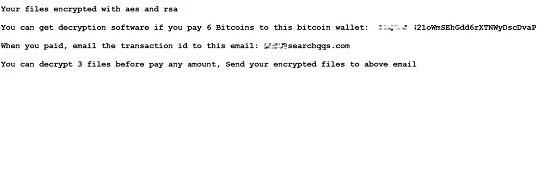Ransom.BAT.MORRISBATCHCRYPT.B
Windows


Threat Type: Ransomware
Destructiveness: No
Encrypted: No
In the wild: Yes
OVERVIEW
Downloaded from the Internet, Dropped by other malware
This Ransomware arrives on a system as a file dropped by other malware or as a file downloaded unknowingly by users when visiting malicious sites.
It drops files as ransom note. It avoids encrypting files with the following file extensions.
TECHNICAL DETAILS
2,327 bytes
BAT
No
14 Mar 2020
Drops files, Deletes files, Terminates processes
Arrival Details
This Ransomware arrives on a system as a file dropped by other malware or as a file downloaded unknowingly by users when visiting malicious sites.
Installation
This Ransomware drops the following files:
- {filename of encrypted file}.bin -> encryption key
Other System Modifications
This Ransomware deletes the following files:
- {filename of encrypted file}.bin
- %System%\star_c.bat -> refers to itself, but filename is hardcoded
(Note: %System% is the Windows system folder, where it usually is C:\Windows\System32 on all Windows operating system versions.)
Process Termination
This Ransomware terminates the following processes if found running in the affected system's memory:
- {any process with image name that starts with "sql"}
Ransomware Routine
This Ransomware avoids encrypting files found in the following folders:
- %Windows%
(Note: %Windows% is the Windows folder, where it usually is C:\Windows on all Windows operating system versions.)
It appends the following extension to the file name of the encrypted files:
- {BLOCKED}o@searchqqs[dot]com
It drops the following file(s) as ransom note:
- {Encrypted directory}\help to decrypt.html

It avoids encrypting files with the following file extensions:
- .exe
- .dll
- .sys
- .lnk
SOLUTION
9.850
15.790.02
07 Apr 2020
15.791.00
08 Apr 2020
Step 1
Before doing any scans, Windows 7, Windows 8, Windows 8.1, and Windows 10 users must disable System Restore to allow full scanning of their computers.
Step 2
Note that not all files, folders, and registry keys and entries are installed on your computer during this malware's/spyware's/grayware's execution. This may be due to incomplete installation or other operating system conditions. If you do not find the same files/folders/registry information, please proceed to the next step.
Step 3
Identify and terminate files detected as Ransom.BAT.MORRISBATCHCRYPT.B
- Windows Task Manager may not display all running processes. In this case, please use a third-party process viewer, preferably Process Explorer, to terminate the malware/grayware/spyware file. You may download the said tool here.
- If the detected file is displayed in either Windows Task Manager or Process Explorer but you cannot delete it, restart your computer in safe mode. To do this, refer to this link for the complete steps.
- If the detected file is not displayed in either Windows Task Manager or Process Explorer, continue doing the next steps.
Step 4
Search and delete these files
- {Encrypted folder}\help to decrypt.html
Step 5
Restore encrypted files from backup.
Did this description help? Tell us how we did.

